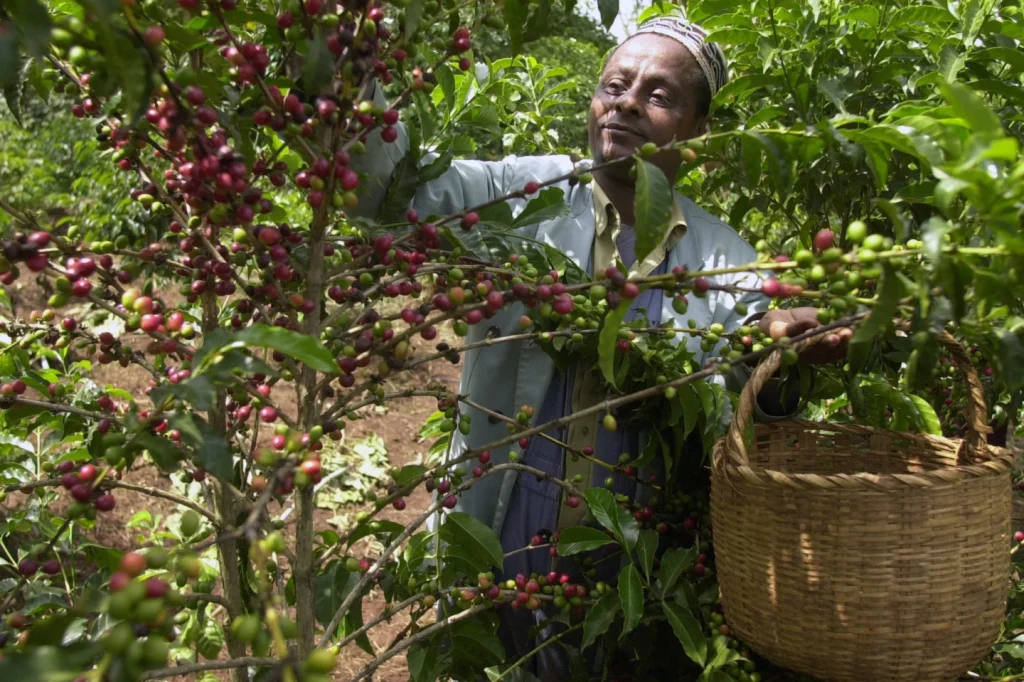The seemingly mundane act of sipping coffee in the morning takes on a profound significance when one considers the ancient origins of the coffee plant.
Recent research has unveiled the astonishing revelation that the beloved Coffea arabica, the most popular type of coffee worldwide, traces its lineage back an astounding 600,000 years.
This essay delves into the implications of this discovery, exploring the natural history of arabica coffee, its cultural and economic significance, and the implications for its conservation in the face of contemporary challenges.
The emergence of Coffea arabica as a distinct species through the natural crossbreeding of two other coffee species represents a remarkable feat of evolution.
Researchers, utilizing genetic data from coffee plants across the globe, have constructed a comprehensive family tree for arabica coffee.
This endeavor not only sheds light on the genetic diversity and evolutionary history of the plant but also holds promise for enhancing its resilience against pests and climate change.
Victor Albert, a biologist at the University at Buffalo and co-leader of the study, emphasized the significance of this finding, highlighting that the species had originated through natural processes, independent of human intervention.
The origins of arabica coffee can be traced back to the wild coffee plants of Ethiopia, where they thrived in their natural habitat. However, it was in Yemen, during the 1400s, that the first instances of roasting and brewing these coffee beans are believed to have occurred.
The subsequent spread of coffee cultivation and consumption across the globe owes much to the fabled account of Indian monk Baba Budan, who purportedly smuggled seven raw coffee beans from Yemen to India in the 1600s.
This act laid the foundation for the global proliferation of coffee, marking the beginning of its ascendancy as a ubiquitous beverage.
Arabica coffee, renowned for its smooth and sweet flavor profile, has become a staple in the global coffee market, constituting a substantial 60% to 70% of the industry.
Its widespread popularity has led to its incorporation into the offerings of prominent coffee brands such as Starbucks, Tim Horton’s, and Dunkin’. In contrast, the remaining portion of the market is dominated by robusta coffee, derived from one of arabica’s parent species, Coffea canephora.
The economic impact of arabica coffee is undeniable, as it underpins a multi-billion-dollar global industry and supports the livelihoods of countless individuals involved in its cultivation, processing, and distribution.
As arabica coffee faces the dual threats of climate change and pest infestations, the imperative to safeguard its genetic diversity and resilience has never been more pressing.
The findings of the aforementioned research hold promise for informing strategies to protect and enhance the sustainability of arabica coffee cultivation.
By gaining insights into the genetic makeup and evolutionary history of the plant, scientists and agricultural experts can develop targeted interventions to mitigate the impact of climate change and bolster the plant’s natural defenses against pests and diseases.
The revelation of the ancient origins of Coffea arabica offers a captivating glimpse into the natural history of one of the world’s most cherished beverages.
From its humble beginnings in the wilds of Ethiopia to its global dominance, arabica coffee has woven itself into the fabric of human culture and commerce.
As we stand at the nexus of environmental challenges and technological advancements, the preservation and sustainable cultivation of arabica coffee stand as imperatives for ensuring the continued availability of this beloved beverage for generations to come.
The history of arabica coffee, one of the world’s most beloved beverages, is a tale woven with threads of genetic mysteries and botanical resilience.
In a recent groundbreaking study published in the esteemed journal Nature Genetics, researchers delved deep into the genomes of Coffea canephora, Coffea eugenioides, and over 30 distinct arabica plants, including a precious sample dating back to the 1700s.
This sample, graciously provided by the Natural History Museum in London and once examined by the eminent Swedish naturalist Carl Linnaeus, played a pivotal role in unraveling the intricate genetic heritage of arabica coffee.
Over millennia, the population of the arabica plant has ebbed and flowed in response to climatic shifts, thriving during warm, wet periods and enduring hardships during dry spells.
These fluctuations led to population bottlenecks, where only a select few genetically similar plants managed to survive.
This genetic bottleneck, while shaping the diversity of arabica coffee, also rendered the species more susceptible to devastating diseases such as coffee leaf rust, resulting in substantial economic losses annually.
The researchers, including experts from Nestlé, a prominent player in the coffee industry, uncovered valuable insights into the genetic makeup of a particular arabica variety resistant to coffee leaf rust.
By identifying specific sections of its genetic code associated with disease resistance, the study offers a glimmer of hope for safeguarding the future of arabica coffee cultivation.
Fabian Echeverria, an esteemed advisor at the Center for Coffee Research and Education at Texas A&M University, emphasized the significance of this research in shedding light on the origins of arabica and providing crucial clues for protecting this vital crop.
As we peer into the past and present of arabica coffee, we are presented with a unique opportunity to ensure the longevity of this cherished beverage.

By understanding the genetic intricacies of arabica and leveraging this knowledge to develop disease-resistant varieties, we pave the way for a sustainable future for coffee cultivation.
The quest to keep coffee plants healthy and our cups brimming with the rich brew of arabica holds immense promise for the early mornings yet to come.
In conclusion, the study of arabica coffee’s genetic heritage not only enriches our understanding of this iconic plant but also offers a pathway towards securing its future.
Through collaboration, research, and a deep appreciation for the intricate tapestry of nature, we stand poised to safeguard arabica coffee for generations to come.
As we raise our morning cups in celebration of this wondrous beverage, let us also raise our voices in appreciation of the researchers and scientists dedicated to preserving the legacy of arabica coffee.

